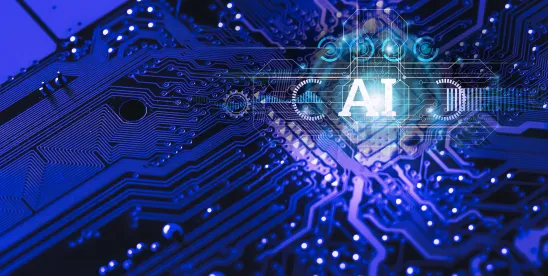The first few days of President Trump's second administration featured a flurry of executive orders and other actions intended in large part to reset American policy in a variety of different areas. The existing US policy on artificial intelligence (AI) was not spared from these actions, as President Trump promptly moved to revoke President Biden's executive order (EO) on the Safe, Secure and Trustworthy Development and Use of Artificial Intelligence, which the Trump White House characterized as “dangerous.” The administration also announced plans for an ambitious project codenamed “Project Stargate” intended to revolutionize American technological development, although there are concerns about its scope and financial viability.
And as it turns out, we did not have long to wonder whether President Trump would specifically replace the Biden EO. On just his fourth day back in office, President Trump signed an EO on Removing Barriers to American Leadership in Artificial Intelligence.
The Policy is the Policy
While the Biden EO's section on AI policy checked in at 1,345 words (unofficially), the Trump EO takes a significantly more direct approach, stating simply:
“It is the policy of the United States to sustain and enhance America’s global AI dominance in order to promote human flourishing, economic competitiveness, and national security.”
This aligns closely with the Republican Party Platform, which states that, in place of the Biden EO, the party supports “AI Development rooted in Free Speech and Human Flourishing.”
The Same, but Different
President Trump's new EO on AI represents a return to a policy arena that he previously addressed during his first term, when, among other orders, he issued EO 13859 on Maintaining American Leadership in Artificial Intelligence in February 2019. That EO order established the "American AI Initiative" as a comprehensive federal strategy for AI development and deployment.
The differences between these two Trump EOs on AI are striking. The 2019 EO was extensive and detailed, laying out specific programs and initiatives while emphasizing collaboration across government, industry, and academia. It balanced innovation with explicit protections for civil liberties and privacy. In contrast, the 2025 EO takes a markedly different approach: it's (much) shorter, more focused on deregulation, and explicitly aims to remove what it characterizes as barriers to AI development.
Among other initiatives, the Biden EO had directed federal agencies to appoint Chief AI Officers and to develop AI security and risk management guidelines. Agencies were also tasked to address AI risks related to privacy, equity, and security. And while America's new policy on AI certainly leaves room for discussion, interpretation, and additional detail, the EO directs specific White House officials to develop and maintain an “action plan to achieve the policy set forth” in the new EO within 180 days and to “identify any actions taken pursuant to [the Biden EO] that are or may be inconsistent with, or present obstacles to, the policy set forth in” the new Trump EO. For any existing AI actions identified, the heads of agencies are directed, “as appropriate and consistent with applicable law,” to “suspend, revise, or rescind such actions, or propose suspending, revising, or rescinding such actions.” The EO also directs the OMB to revise its existing guidance consistent with these new standards.
Among the officials charged with this plan is the “White House AI and crypto czar,” former PayPal executive David Sacks, who Trump promised would “steer [the US] away from Big Tech bias and censorship," consistent with the Trump EO's purpose to rid AI systems “from ideological bias or engineered social agendas.” This represents a significant shift from the Trump administration's earlier, more measured approach to AI governance. Because of the high degree of subjectivity and room for interpretation regarding the new US policy, however, it would be foolish to prognosticate on any specific, concrete policy changes.
Looking Ahead
The new EO is both a policy proclamation and essentially a directive to unwind any existing federal AI policies, standards, and guidance based on Biden-era AI standards. While the particulars may be scant, the Trump EO signals that the new administration fully intends to keep its focus on American "dominance" in the space. Whatever gaps or holes are created concerning responsible AI innovation, safety, and governance may well be filled by state regulation and, if they are willing, the material market players.






 />i
/>i

